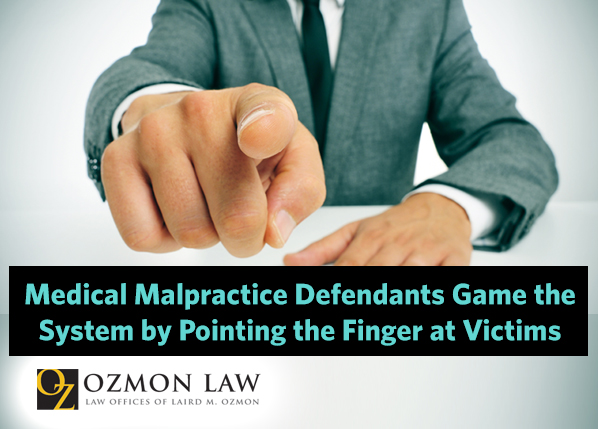
The National Center for Health Statistics reported in 2016 that medical malpractice is the third leading cause of death in the United States. This brings into full relief the reality of how many injured malpractice victims are never compensated. To compound the unfairness, the negligence of health care providers is rarely publicized while the spin machine for doctors and insurance companies spew their propaganda of excess jury verdicts and a fictitious malpractice crisis. This allows the plaintiff to fall victim again and again.
The medical malpractice cases I have tried over the past few years have exposed this insidious trend in defense strategy that requires more activism on the part of the players. Doctors employ questionable ethics by explaining obvious absences of crucial medical histories or important patient conversations in their records with the stock answer that it was asked or known based upon their “custom and practice.” The old medical adage of “if it’s not charted, it did not happen” cannot be the rule only when it benefits physicians, it must be the universal rule—even when it hurts the doctors.
These ethical shortcomings are further encouraged by insurance companies through their lawyers creating fictitious scenarios to blame the injured patient and oftentimes without properly pleading such a defense. Rarely have I seen defendants plead the affirmative defense of the plaintiff’s contributory or comparative negligence as required under Illinois law (see Green v. University of Chicago Hospital and Clinics, 258 Ill.App.3d 536, 631 N.E.2d 271 (1st Dist. 1994). Yet in every case the defendant seems to get away with insinuating the patient is somehow culpable for his or her injuries, to the great detriment of plaintiffs.
While it is my standard, prudent practice to seek to bar any such implication via a motion in limine, which is often granted, the hints, innuendo and “wink-wink” inferences just keep coming in defiance of Illinois law. And there is no doubt that this practice severely prejudices the plaintiff’s case. This is particularly true in medical malpractice cases where research shows the jury is biased in favor of the “benevolent doctor” as opposed to the injured victim. Psychologically the implication that the plaintiff was somehow at fault seems to empower the jury to find for the defendant.
Notwithstanding this, Defendant’s rationale is always cloaked in some seemingly innocuous pretext, i.e. they are just giving a timeline of the facts (that included the plaintiff did not follow-up with his or her own physician). This practice needs to be quashed by the trial judges in control of the jury trials. This means scrutinizing the pleadings and enforcing the law applicable to pleading practice, granting the plaintiff’s motions in limine and strictly enforcing these rulings at trial, including granting motions for contempt or mistrial. Many of these cases should be referred to and reviewed by the medical associations charged with the oversight of the profession. Until medical malpractice defendants clearly understand that this practice will not be tolerated, they will continue to push the bounds of the law and ethics and impeding personal injury plaintiffs’ access to justice. Maybe then the playing field will be such that plaintiffs can get a fair trial!

Laird M. Ozmon, Attorney at Law
